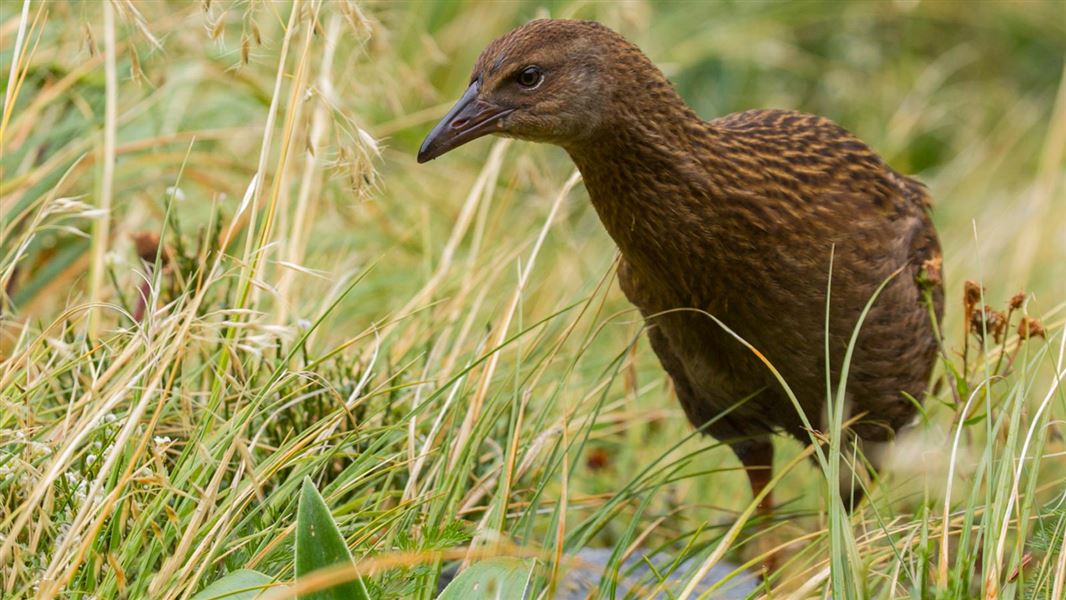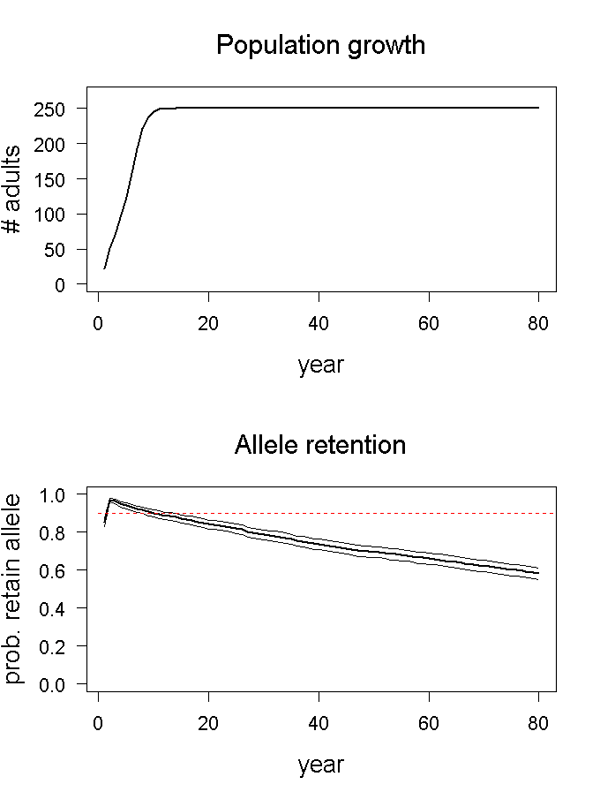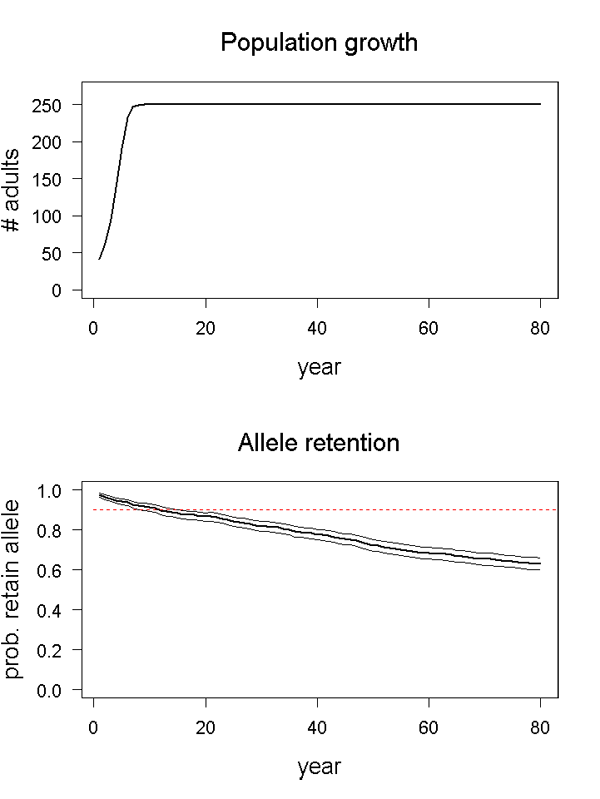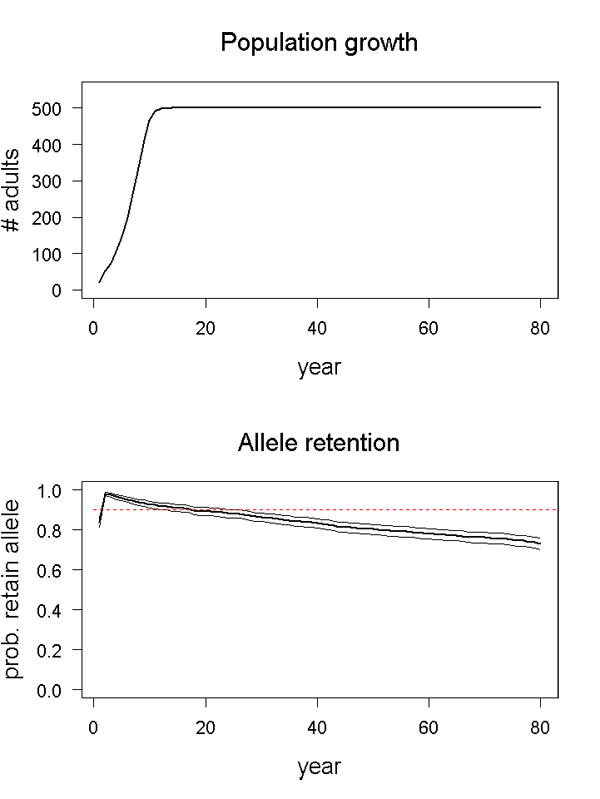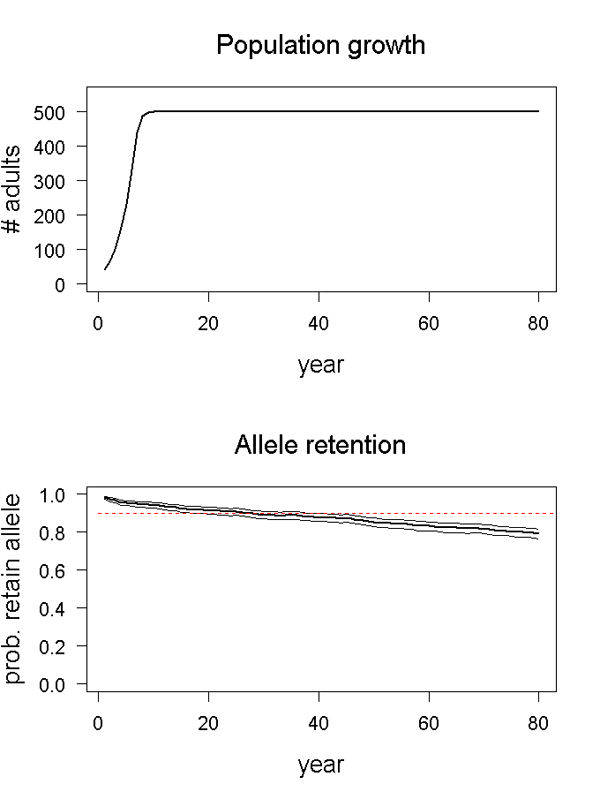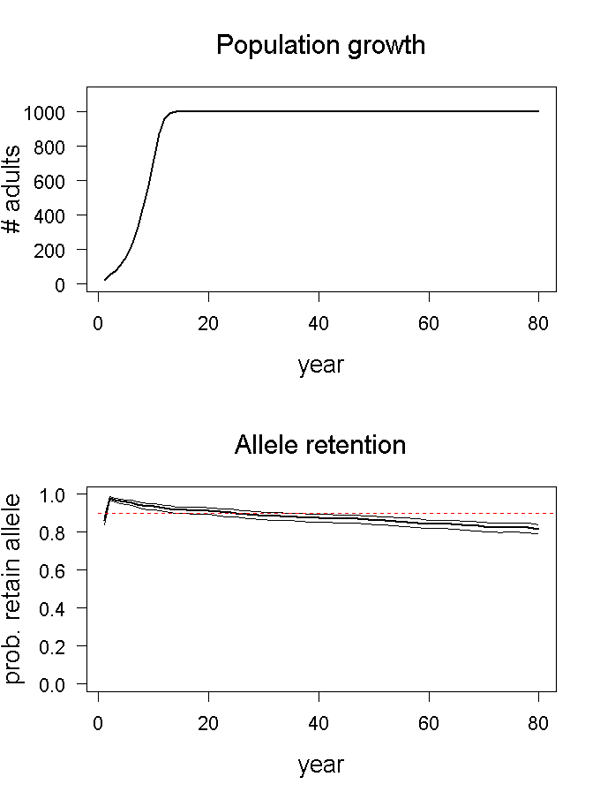First determine your habitat connectivity, habitat size and predator control levels of the translocation site; then view the predicted success of translocations for different scenarios.
Points to note if you are translocating this species
Weka occupy a wide range of habitats, including native and exotic forests, scrublands, wetlands, rough pasture and coastal areas. They often use edge habitats but require adjacent dense areas for retreat and breeding. Weka populations often undergo large fluctuations in response to predators or drought/food availability.
All weka translocations should be planned and carried out in consultation with the Weka Recovery Group, which leads the recovery of the species on a national scale to ensure the fastest rate of recovery.
When selecting a translocation site, it is important that you also consider other species that might be preyed on by weka.
If you are releasing birds at unfenced mainland sites, they may have high levels of dispersal and so will require a high level of post-release monitoring, such as radio tracking for up to 2 months.
Factors of success for North Island weka
Founder number for maximising genetic diversity
60–120
Habitat connectivity
Low (isolated) and Medium
Water and unsuitable open habitat are not much of a barrier for weka, but they are unlikely to disperse from islands > 2 km offshore or from sites with well-maintained predator fences > 1 m high. You might be able to mitigate initial dispersal following release by holding the birds captive at the release site for around 6 weeks.
High (adjoining)
Most release sites will have high connectivity as on land weka are able to cross large distances over relatively unsuitable habitat, including major rivers – they have been known to swim > 900 m.
Habitat size
Weka density varies between habitats, but healthy mainland populations typically have ≥ 0.6 weka/ha, with densities reaching up to 2.6 weka/ha in high-quality habitats.
Small (minimum area) and Medium
It is probably inappropriate to translocate weka to small areas because they will dominate the ecosystem.
Large
200– >800 ha
Minimum predator control
If you are translocating weka, you will need to maintain predators at a low density at the release site at a minimum. However, overall survival and productivity will probably be higher at sites where predators are eradicated or maintained at zero density.
Predators maintained at low density
You must control ferrets and dogs at the release site, and should also control cats and stoats, particularly during the establishment phase. Rats, pigs and possums are not significant predators of weka, but they are competitors so their control will likely benefit establishing weka populations. It is also important to note that vehicles can be a significant source of weka mortality at sites that are adjacent to or bisected by roads.
Predators eradicated
This requires the total eradication of all target predators with the exception (in most cases) of mice, or the maintenance of zero density year-round.
Predicted success for scenarios
North Island weka: Scenario 1
Scenario: Low habitat connectivity, small habitat size, predators maintained at low density.
Data source: No translocation data are available for weka. Therefore, some data were obtained from the Kawau Island population while other values were obtained from experts based on mainland populations. Initial survival was reduced to 0.6 and non-breeder/juvenile survival was reduced to 0.61/0.32, respectively, to account for mainland dispersal. There is no certainty in the results, however.
Conditions: 60 birds were translocated in year one followed by a further 60 in year two; the carrying capacity of the site was 250 weka; there was no migration.
Outcome: A viable population will likely establish, but some genetic diversity will be lost over ten generations, which could affect the long-term persistence of the population. Improving predator control will not solve this issue (see Scenario 2), but you could improve this result by choosing a larger site (see Scenarios 5 and 6).
North Island weka: Scenario 2
Scenario: Low habitat connectivity, small habitat size, predators eradicated.
Data source: No translocation data are available for weka. Therefore, some data were obtained from the Kawau Island population while other values were obtained from experts based on mainland populations. There is no certainty in the results, however.
Conditions: 60 birds were translocated in year one; the carrying capacity of the site was 250 weka; there was no migration.
Outcome: A viable population will likely establish, but some genetic diversity will be lost over ten generations, which could affect the long-term persistence of the population. You could improve this result by choosing a larger site (see Scenarios 5 and 6).
North Island weka: Scenario 3
Scenario: Low habitat connectivity, medium habitat size, predators maintained at low density.
Data source: No translocation data are available for weka. Therefore, some data were obtained from the Kawau Island population while other values were obtained from experts based on mainland populations. Initial survival was reduced to 0.6 and non-breeder/juvenile survival was reduced to 0.61/0.32, respectively, to reflect mainland dispersal. There is no certainty in the results, however.
Conditions: 60 birds were translocated in year one followed by a further 60 in year two; the carrying capacity of the site was 500 weka; there was no migration.
Outcome: A viable population will likely establish, but some genetic diversity will be lost over ten generations, which could affect the long-term persistence of the population. You could improve this result by choosing a larger site (see Scenarios 5 and 6).
North Island weka: Scenario 4
Scenario: Low habitat connectivity, medium habitat size, predators eradicated.
Data source: No translocation data are available for weka. Therefore, some data were obtained from the Kawau Island population while other values were obtained from experts based on mainland populations. There is no certainty in the results, however.
Conditions: 60 birds were translocated in year one; the carrying capacity of the site was 500 weka; there was no migration.
Outcome: A viable population will likely establish and c. 80% of genetic diversity will be maintained over ten generations. You could improve this result by choosing a larger site (see Scenarios 5 and 6).
North Island weka: Scenario 5
Scenario: Low habitat connectivity, large habitat size, predators maintained at low density.
Data source: No translocation data are available for weka. Therefore, some data were obtained from the Kawau Island population while other values were obtained from experts based on mainland populations. Initial survival was reduced to 0.6 and non-breeder/juvenile survival was reduced to 0.61/0.32, respectively, to reflect mainland dispersal. There is no certainty in the results, however.
Conditions: 60 birds were translocated in year one followed by a further 60 in year two; the carrying capacity of the site was 1000 weka; there was no migration.
Outcome: A viable population will likely establish and 80–90% of genetic diversity will be maintained over ten generations. You could improve this result by eradicating predators (see Scenario 6).
North Island weka: Scenario 6
Scenario: Low habitat connectivity, large habitat size, predators eradicated.
Data source: No translocation data are available for weka. Therefore, some data were obtained from the Kawau Island population while other values were obtained from experts based on mainland populations. There is no certainty in the results, however.
Conditions: 60 birds were translocated in year one followed by a further 60 in year two; the carrying capacity of the site was 1000 weka; there was no migration.
Outcome: A viable population will likely establish and 80–90% of genetic diversity will be maintained over ten generations.
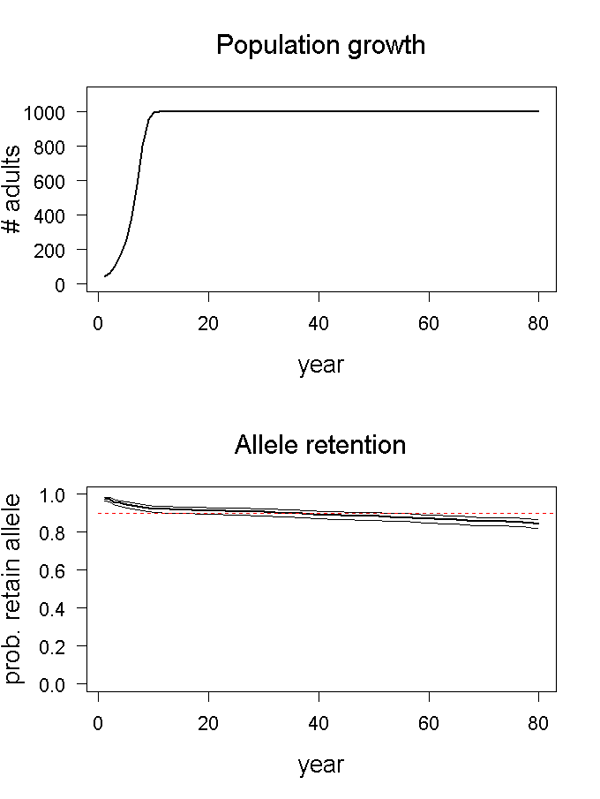
Change size
